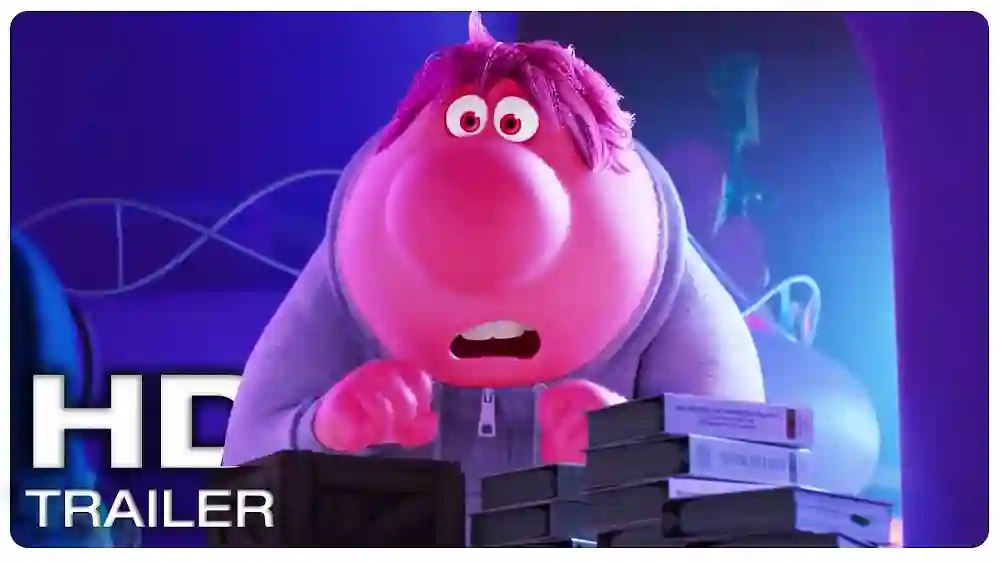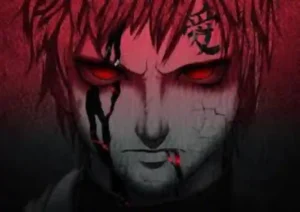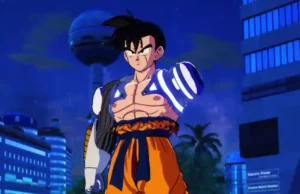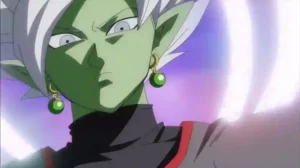Embarrassment Inside Out 2 – Understanding Embarrassment’s Role

Okay, let’s get real here. You remember Inside Out, right? The flick where we get to peek into the mind of Riley, the girl with more emotions than a soap opera on a rainy Tuesday? Yeah, the movie where we were introduced to Joy, Sadness, Anger, Fear, and Disgust. Well, enter Embarrassment Inside Out 2, where things get way more complicated—like trying to fold a fitted sheet while blindfolded complicated.
Now, we’re not just talking about a quick blush when you trip over your own feet in front of the cute barista. Nope. Embarrassment Inside Out 2 brings embarrassment to a whole new level. It’s about how and why we feel awkward, self-conscious, or downright mortified. And it does it in the way only Pixar knows how: a mix of laughs, cringe-worthy moments, and a few “Yeah, that’s me” vibes.
The Nature of Embarrassment in Inside Out 2
So, here’s the deal: in the first Inside Out movie, emotions were like a team of slightly dysfunctional coworkers. Each emotion—Joy, Sadness, Anger, Fear, Disgust—had their own little corner of Riley’s mind. But in Embarrassment Inside Out 2, the writers decided it was time to bring in Embarrassment to shake things up. Honestly? It’s like when you go to a party and your introverted friend suddenly starts playing karaoke—awkward at first, but it kind of works.
Embarrassment, as we learn in the sequel, is that little gremlin that pops up when you’re out of sync with the world around you. It’s like when you wave back at someone who wasn’t actually waving at you—now you’re stuck in that limbo of confusion and shame. You get this “Oh no, what have I done?” moment. Only now, in Embarrassment Inside Out 2, Embarrassment is no longer a bystander—it’s an active player.
Embarrassment as a Complex Emotion
Let’s be real: embarrassment isn’t a one-hit wonder. It’s not just blushing when you get caught in a lie. It’s deeper. Way deeper. Embarrassment Inside Out 2 shows us that this emotion can stir up a full storm of feelings—guilt, regret, vulnerability. It’s like trying to juggle eggs while riding a unicycle—you don’t know which way to turn, and something’s bound to crack.
You’ve probably had that feeling of wanting to shrink into the floor when you make a social faux pas. In Embarrassment Inside Out 2, Embarrassment isn’t just some sidekick. It’s an emotion that nudges Riley into moments of reflection, teaching her the difference between an honest mistake and that moment when you just want to pretend the earth could swallow you whole. But trust me, it’s doing more than making you cringe—it’s making you think.
The Role of Embarrassment in Social Development
Fast forward past three failed attempts at perfecting your TikTok dance moves and… yep, you’re still that awkward person at the party. Welcome to real life. Embarrassment Inside Out 2 digs into how this emotion plays a key role in shaping us socially. Riley isn’t just facing awkward moments because she tripped over her own feet. No. Embarrassment is a compass, helping her adjust to social norms. It’s like when you wear something that’s “in style” but secretly know it’s more “Halloween costume” than “fashion-forward.” Embarrassment gently nudges you to read the room, so to speak.
As Riley’s emotional team gets to grips with Embarrassment’s presence, they realize it’s an emotional compass that helps her learn the boundaries of social expectations. Just like in high school, when you’re trying to figure out if it’s okay to eat a burrito in front of your crush (spoiler alert: it’s probably not).
Embarrassment and Self-Awareness
Now, here’s the kicker. Embarrassment does something super important that we often overlook—it forces you to think about yourself. It makes you self-aware in a way that no other emotion does. Ever had that moment where you said something out loud and immediately wanted to crawl into a hole? Been there, done that. It’s like how, when I wore white jeans last summer, I realized about 15 minutes into the day that… well, it was not a good look.
In Embarrassment Inside Out 2, we see Riley’s team deal with the realization that without embarrassing moments, we’d never really understand how others perceive us. Embarrassment teaches Riley that personal growth isn’t about perfection—it’s about learning how your actions affect others. Sometimes it takes the cringe factor to bring you back to reality. But hey, at least she’s learning, right?
The Emotional Evolution in Embarrassment Inside Out 2
So, here’s a fun little tidbit. Did you know my first herb garden died faster than my 2020 sourdough starter? RIP, Gary the basil. Yeah, there’s an art to growing things. But Embarrassment Inside Out 2 shows that Riley, much like my poor garden, grows emotionally over time. In the beginning, Riley is like that kid who refuses to leave their house because they spilled juice on their shirt. But over time, she starts realizing that embarrassment doesn’t have to be this dark, looming cloud.
The Importance of Mistakes in the Journey
Embarrassment isn’t the villain here. Mistakes are. Because honestly? Without the oopsies, the slip-ups, and the oh God, did I really just say that? moments, how would we learn? I’ve had more embarrassing moments than I can count, and they’ve taught me some wicked valuable stuff. My first herb garden? It was an epic failure, but without it, I wouldn’t know the difference between basil and thyme. Same with life, I guess.
- Embarrassment Inside Out 2 shows that:
- Mistakes lead to self-reflection
- Awkward moments teach empathy
- Humility grows from discomfort
The Balance Between Embarrassment and Other Emotions
Ever noticed how embarrassment seems to pull along a bunch of its friends? Joy wants to make everything happy, but sometimes, even she can’t hide the fact that you tripped over nothing and spilled your drink all over your boss. And there’s Fear, lurking in the background like “What if this ruins everything?” Embarrassment Inside Out 2 highlights that no emotion stands alone. They all collaborate (or sabotage each other) to help Riley process these awkward moments.
There’s this moment where Embarrassment and Anger almost go head-to-head. Imagine your angry inner monologue fighting with that “I’m so sorry” feeling. A mess, right? But in the end, this emotional showdown teaches Riley that handling embarrassment isn’t about pushing it away—it’s about integrating it with the other emotions to grow stronger.
Embarrassment and Social Expectations
Here’s the thing. When Riley feels embarrassed in Embarrassment Inside Out 2, it’s because she doesn’t measure up to some social expectation. Cue that time when you walked into a meeting and realized half your buttons were undone. That level of discomfort is rooted in the pressure of fitting in, something we’ve all dealt with. But the movie shows that Riley’s emotional team teaches her something big: Everyone feels this way. And if everyone’s embarrassed, maybe it’s not such a big deal.
Growing Beyond Embarrassment
And just when you think Riley’s going to drown in her awkwardness, something magical happens. Embarrassment Inside Out 2 doesn’t just end with her cringing away. No, Riley starts realizing that embarrassment doesn’t need to be this thing to be avoided. She faces it head-on, learns from it, and moves on. Maybe we should all take notes. Like that time I wore flip-flops in a snowstorm and almost fell flat on my face—not my best moment, but it’s a story for another day.
How Embarrassment Inside Out 2 Mirrors Real Life
Let’s pause for a sec. Embarrassment Inside Out 2 isn’t just about a cartoon girl. It’s a mirror. It reflects our own struggles with awkwardness and discomfort. And honestly? We’ve all been there—tripping over our words, feeling self-conscious about a social blunder. But the movie’s takeaway is golden: It’s all part of the journey. So the next time you feel the urge to shrink into a corner after saying something dumb, just remember: Riley gets it. And so do we.
Key Takeaways from Embarrassment Inside Out 2
- Embarrassment is more than just a “cringe” moment. It’s part of personal growth.
- Mistakes and awkwardness shape how we interact with the world.
- Embracing embarrassment leads to deeper self-awareness and resilience.
How Embarrassment Shapes Our Relationships
Here’s the deal. Embarrassment Inside Out 2 really drives home how this emotion impacts our relationships. That “oops” moment? It’s like the emotional glue that holds us together. When you screw up, apologize, and move on—suddenly you’ve connected with others on a human level. You’re not perfect, but neither is anyone else.
The Future of Emotional Storytelling
In the end, Embarrassment Inside Out 2 is more than just a fun movie. It’s a lesson. One that says, “Hey, we all get embarrassed. So what?” It’s the kind of storytelling that shows that even our most uncomfortable moments can teach us something valuable. It’s just up to us to pay attention.




